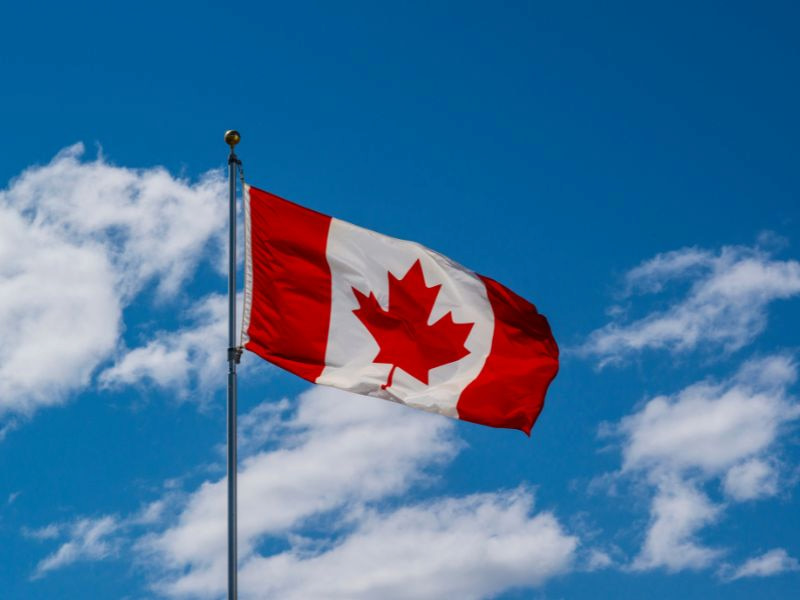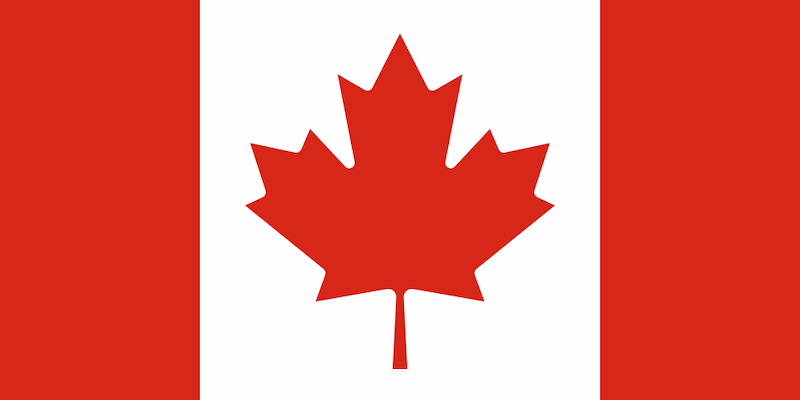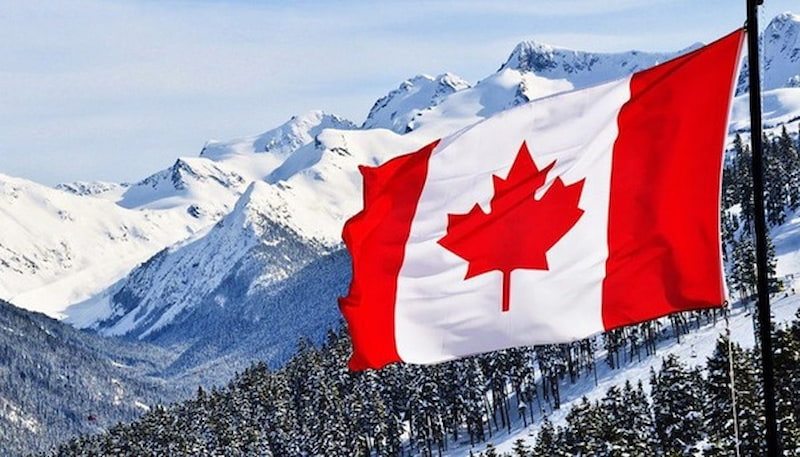Get free consultation
Fill out the form and we will contact you
The flag of Canada is one of the most easily recognizable national flags in the world, thanks to its distinctive features. Its design holds significant meaning for the country’s culture and geography. In this article, quoctichthuhai.com will provide a comprehensive overview of the Canadian flag along with some interesting facts, stay tuned!
The Canadian flag is highly memorable due to its shape, colors, and design, featuring two primary colors: red and white. This symbol also carries special significance in terms of design, culture, and geography, which become clearer when explored in depth.
The Canadian flag is a proud symbol of the nation
At first glance, the Canadian flag appears simple yet distinctive, unlike any other flag in the world. As a national symbol, its design follows specific conventions regarding size and shape:
Proportions: 1:2 (height to length).
Colors: Bright red and white.
Layout: Two vertical red stripes on each side, each occupying ¼ of the flag’s length. In the center is a white square occupying ½ of the length, featuring a prominent 11-pointed red maple leaf—the iconic symbol of Canada.
The uniqueness of the Canadian flag lies in the multiple layers of meaning behind its design:
The 11-pointed maple leaf at the center represents unity, peace, and nature. The maple leaf has been a Canadian symbol since the 18th century, especially during wartime and in the military. The simple and clear proportions make the flag easily recognizable and reflect transparency in Canada’s political and cultural system.
The flag also represents the two oceans surrounding the country: the Atlantic and the Pacific. The white background symbolizes the land of Canada, while red represents strength, courage, and the blood shed by Canadian soldiers during world wars. White also stands for purity, peace, and honesty.
What shape does the Canadian flag feature, and why is it meaningful?
The maple leaf is Canada’s most iconic cultural symbol, appearing in literature, music, currency, the national hockey team emblem, and even military badges. It represents national identity, patriotism, and the pride of Canadian citizens.
Unlike many Commonwealth countries, Canada’s flag does not feature symbols of the British monarchy, highlighting the country’s independence and unique identity. The flag is recognized as a unifying symbol for Canada’s multicultural communities, especially given its status as a major immigrant nation.
The two red vertical stripes on either side of the flag are widely interpreted as representing the Atlantic and Pacific Oceans, which border the country to the east and west.
The maple tree is abundant in Canadian forests, particularly in Quebec, Ontario, and eastern regions. This symbol reflects Canada’s close connection to nature and the importance of forests to the nation’s environment and economy. The white center is said to represent the long winters and snowy landscapes, highlighting key aspects of Canada’s climate and scenery.
Canada’s current flag went through several stages of development before becoming the symbol we know today. Here are the key milestones in the creation of the Canadian flag:
Before 1965: Canada did not have an official national flag. During its time as a colony and later as a self-governing country within the Commonwealth, Canada often used a red flag featuring the Canadian coat of arms with the Union Jack in the upper left corner.
1964: Prime Minister Lester B. Pearson proposed a design featuring three maple leaves on a white background with two blue stripes, but it faced strong opposition.
A special flag committee of 15 members from multiple political parties was formed to select an official design.
The final design, featuring an 11-pointed red maple leaf on a white background with two red vertical stripes on each side, was created by Stanley and John Matheson and ultimately chosen.
December 15, 1964: The Canadian Senate and House of Commons approved the new design after weeks of debate.
January 28, 1965: The flag was officially recognized by Queen Elizabeth II.
February 15, 1965: The Canadian flag was raised for the first time at Parliament Hill in Ottawa. This date later became Canada’s National Flag Day.
The Canadian flag has a unique history of its debut
Canada is a country rich in history and culture, blessed with abundant natural beauty and a high quality of life—making it an ideal destination for immigration. If you are considering settling in Canada but are unsure about the required documents, procedures, or eligibility, contact quoctichthuhai.com to access our services:
We provide guidance, consulting, and profile enhancement for those applying for citizenship or visas.
We have served thousands of clients, all of whom have provided positive feedback.
Our team of specialists offers customer care and expert advice, with deep knowledge of Canadian laws and policies.
Our immigration service fees are highly competitive in the market.
Our extensive experience ensures a high success rate in obtaining permanent residency.
The Canadian flag is a proud symbol of the country and its people, with an impressive and meaningful design. Behind the flag lie stories of culture, history, and geography that reflect the unique identity of the Maple Leaf Nation. We hope this article provides interesting and useful information, and don’t forget to seek advice on Canadian immigration services through https://quoctichthuhai.com/!
Fill out the form and we will contact you



